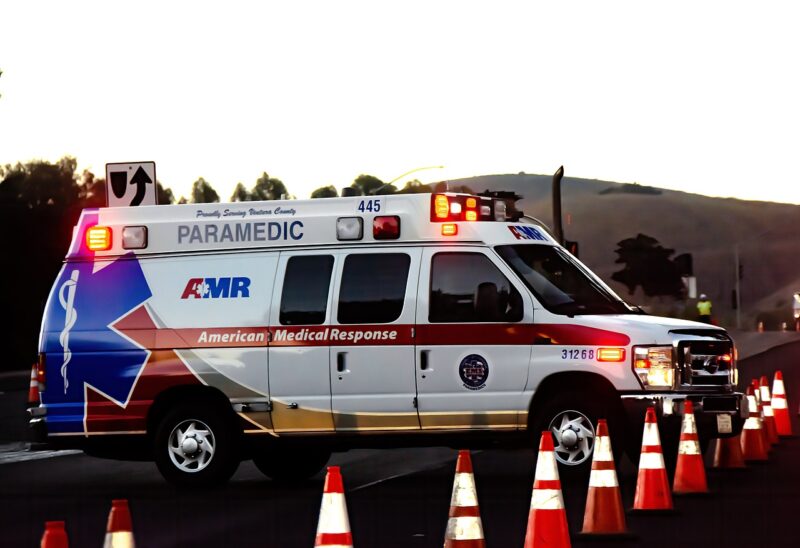Understanding Ambulance Response Times: What Affects Speed in Different Areas
November 13, 2024

Ambulance response times are crucial indicators of emergency medical service (EMS) efficiency and effectiveness. Understanding the factors that influence these times can help communities improve their emergency services, thereby saving lives. This article delves deep into the various elements that impact ambulance response times across different geographical areas, highlighting the discrepancies that often arise based on location, infrastructure, population density, and emergency protocols.
1. What Are Ambulance Response Times?
Ambulance response time is the duration from the moment a 911 call is placed until the ambulance arrives at the location of the emergency. This time is typically broken down into two segments:
- Call Processing Time: The time it takes for emergency dispatch to receive the call, assess the situation, and send an ambulance to the scene.
- Travel Time: The time taken for the ambulance to travel from its station to the patient’s location.
In most urban areas, the target response time for an ambulance is within eight minutes, while in rural settings, this target may extend to 30 minutes or more due to longer distances and fewer resources.
2. Factors Influencing Ambulance Response Times
Multiple factors can affect how quickly an ambulance can respond to an emergency call:
2.1 Geographic Location
The geographical layout of an area plays a significant role in system efficiency. Key elements include:
- Urban vs. Rural: Urban settings typically have shorter travel distances and more ambulances available, while rural areas may experience longer distances to cover and fewer available units.
- Traffic Conditions: Congestion in cities can cause delays, whereas open roads may allow for rapid transit in less populated areas.
- Infrastructure: Proper road maintenance and signage can significantly enhance the speed of ambulances reaching emergencies.
2.2 Population Density
The density of a population affects both the demand for emergency services and the resources available to meet that demand:
- High-Density Areas: With more people concentrated in a smaller area, emergency calls may be more frequent, potentially overwhelming local services and slowing response times.
- Low-Density Areas: Fewer resources in low-density areas may result in longer wait times as ambulances cover larger swathes of territory with fewer populations to serve.
2.3 Time of Day
The time at which emergency calls are made can also influence response times:
- Peak Hours: Emergency rooms are often busier at night and during weekends, which may lengthen response times as multiple ambulances are dispatched to other emergencies.
- Off-Peak Hours: During hours of lower call volume, ambulances may experience quicker reaction times as they are not dealing with competing calls and can respond promptly.
3. The Role of Emergency Medical Technicians (EMTs)
The training, experience, and protocols followed by EMTs also significantly impact response efficiency:
3.1 EMT Training and Preparedness
Highly trained EMTs can make more effective split-second decisions, ultimately influencing the overall efficiency of the response:
- Skill Level: More experienced EMTs tend to assess situations quickly and correctly, ensuring patients receive timely medical care.
- Communication Skills: Clear communication with dispatch and between team members can smooth the chain of events from call receipt to patient care.
3.2 Protocols and Algorithms
Protocols designed by health organizations can streamline the process:
- Advanced Communication Technologies: Using mobile data terminals (MDTs) and GPS tracking allows dispatchers to allocate resources more efficiently based on real-time information.
- Standard Operating Procedures (SOPs): SOPs guide EMTs in best practices for prioritizing calls and navigating to emergencies effectively.
4. Technology’s Impact on Ambulance Response Times
Technology has brought improvements to how ambulances respond to emergencies:
4.1 GPS and Navigation Systems
GPS technology enables the rapid identification of the quickest routes to patient locations, especially during peak traffic times.
4.2 Real-Time Data Sharing
Integration of real-time data sharing among agencies can lead to improved coordination and response planning.
4.3 Predictive Analytics
Emerging technologies utilize data to anticipate areas where emergencies will occur, allowing services to position themselves proactively.
5. Community Factors and Initiatives
Communities can play a significant role in enhancing ambulance response times:
5.1 Community Awareness and Education
Educating the public about proper emergency protocols (e.g., not calling for an ambulance unless necessary) can decrease unnecessary demand on services.
5.2 Advocating for Resources
Communities can advocate for more funding for increased EMS staffing or better infrastructure (like road expansions) to ensure timely responses.
5.3 Creating Partnerships
Building partnerships among local agencies (fire, police, and other emergency services) can create a consolidated approach to community safety, ensuring resources are used effectively.
6. Conclusion: Improving Ambulance Response Times
Improving ambulance response times is a multifaceted effort that requires understanding the various factors influencing these times. Geographic location, population density, technology, and the overall efficiency of emergency services play significant roles in how quickly help can arrive in critical situations. By implementing advanced technology and improving community relationships, resources, education, and effective protocols, we can work toward ensuring that every individual receives timely emergency care when it is needed most.
Communities and EMS can benefit from an ongoing dialogue that assesses current practices, explores innovative solutions, and strives to resolve existing challenges. Collectively, these efforts can help elevate the standards of emergency care and ultimately save lives across various regions.






